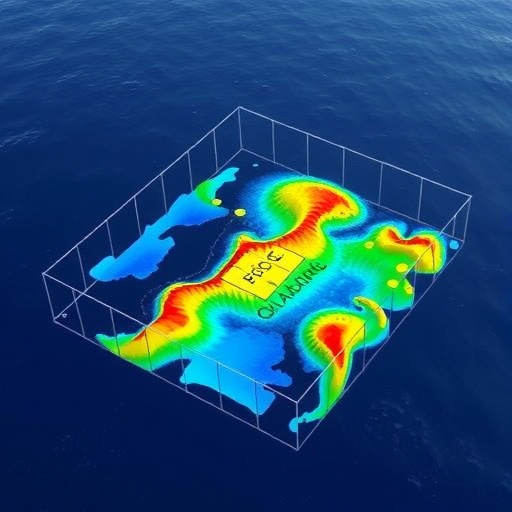In 2025, researchers led by Jianjun Liao published a groundbreaking paper in the journal Environmental Monitoring and Assessment, shedding light on an innovative approach to marine oil spill monitoring. With the increasing frequency of oil spills around the globe, the need for efficient detection and response measures has never been more crucial. Their study introduces a Multi-dimensional Attention-Based MOSSM model specifically designed for analyzing Synthetic Aperture Radar (SAR) images. This multi-faceted approach not only enhances detection capabilities but also streamlines the process of monitoring environmental degradation associated with oil spills in marine ecosystems.
SAR imaging represents a significant leap forward in remote sensing technology, enabling the capture of high-resolution images of Earth’s surface regardless of weather conditions or daylight limitations. The use of SAR technology in oceanography, especially in the detection of oil spills, has demonstrated remarkable potential. The unique ability of radar waves to penetrate clouds and darkness provides researchers with the tools necessary to monitor extensive marine areas quickly and effectively, eliminating the constraints posed by traditional optical imaging techniques. Nevertheless, extracting meaningful information from these complex SAR images presents a significant challenge.
Liao and colleagues recognized the limitations of conventional machine learning and image processing methods in processing SAR imagery for oil spill detection. Traditional approaches often rely heavily on predefined features extracted from images, which can be inadequate for the multi-dimensional nature of SAR data. The researchers proposed their MOSSM model, which leverages an attention mechanism to focus on relevant features within SAR images while ignoring irrelevant data. This model represents a significant innovation, utilizing deep learning architectures to improve the accuracy and reliability of oil spill detection in varying environmental conditions.
The MOSSM model comprises several layers that efficiently handle the complexity of SAR images. The structure is designed to reflect the hierarchical and multi-scale characteristics of oil spills, which may vary in size, shape, and surface conditions. By employing the multi-dimensional attention mechanism, the model dynamically learns to emphasize vital features, enabling it to distinguish between oil slicks and other phenomena such as waves or sea surface patterns. This mechanism not only improves detection rates but also reduces the incidence of false positives, a common issue in traditional monitoring methods.
Through a series of rigorous experiments, the researchers validated the effectiveness of the MOSSM model against numerous existing techniques. The results demonstrated a substantial improvement in detection accuracy across various scenarios, suggesting that the model could provide a robust alternative for operational monitoring of oil spills. The model’s performance was further bolstered by its ability to adapt to different SAR imaging conditions, showcasing its versatility in real-world applications.
In addition to its technical advancements, the implementation of the MOSSM model holds significant implications for environmental policy and marine conservation efforts. Efficient detection of oil spills allows for more timely and effective response measures, minimizing damage to marine ecosystems and facilitating restoration efforts. The researchers advocate that widespread adoption of this technology could transform the monitoring landscape, providing authorities and environmental agencies with powerful tools to combat the detrimental impacts of marine pollution.
The study also highlights the potential for the MOSSM model to be integrated into existing monitoring frameworks. By combining it with data from other sources, such as satellite imagery and oceanographic data, a more comprehensive understanding of marine health can be achieved. This integrative approach could significantly enhance predictive capabilities, allowing for preemptive measures to be taken in anticipation of spills, thereby safeguarding marine biodiversity and supporting sustainable management practices.
Moreover, the MOSSM model embodies the growing trend of employing artificial intelligence in environmental sciences. The ability for machines to learn and adapt based on vast datasets creates opportunities to uncover patterns and insights that would be difficult to detect through conventional analysis. As the field of remote sensing continues to advance, such models could revolutionize not only oil spill monitoring but also contribute to broader environmental monitoring initiatives, including climate change, biodiversity loss, and habitat degradation.
As the research community and regulatory bodies reflect on the findings presented by Liao and his team, the MOSSM model is poised to play a significant role in future marine monitoring strategies. The implications for enhancing our ability to respond to environmental disasters are profound. By more effectively identifying oil spills before they escalate, we can initiate remedial actions more swiftly, ultimately ensuring healthier oceans and promoting the preservation of marine ecosystems.
In conclusion, the introduction of the Multi-dimensional Attention-Based MOSSM model marks a pivotal advancement in maritime environmental monitoring. The unique technological innovations demonstrated in this study provide a promising pathway to tackle one of the pressing challenges of our time—marine oil pollution. As researchers continue to explore and refine such models, the future of remote sensing, particularly in environmental applications, looks increasingly bright.
The findings of Liao et al. serve as a call to action for further investment in remote sensing technologies and AI-driven models. As environmental crises grow more prevalent and complex, so too must our strategies for monitoring and mitigating their effects. The MOSSM model exemplifies the intersection of technology and environmental responsibility, paving the way for smarter, more responsive approaches to ensuring the health of our planet’s oceans for generations to come.
By championing the integration of cutting-edge technology with established environmental monitoring practices, the research of Liao and his colleagues may indeed become a cornerstone of effective marine conservation efforts. The road ahead is fraught with challenges; however, with innovative tools like the MOSSM model at our disposal, we stand on the threshold of a new era in environmental stewardship.
Subject of Research: Marine Oil Spill Monitoring
Article Title: Multi-dimensional Attention-Based MOSSM Model for Marine Oil Spill Monitoring in SAR image Remote Sensing
Article References:
Liao, J., Li, Z., Tang, X. et al. Multi-dimensional Attention-Based MOSSM Model for Marine Oil Spill Monitoring in SAR image Remote Sensing. Environ Monit Assess 197, 1210 (2025). https://doi.org/10.1007/s10661-025-14676-1
Image Credits: AI Generated
DOI: 10.1007/s10661-025-14676-1
Keywords: Marine oil spill, SAR imaging, remote sensing, machine learning, environmental monitoring




